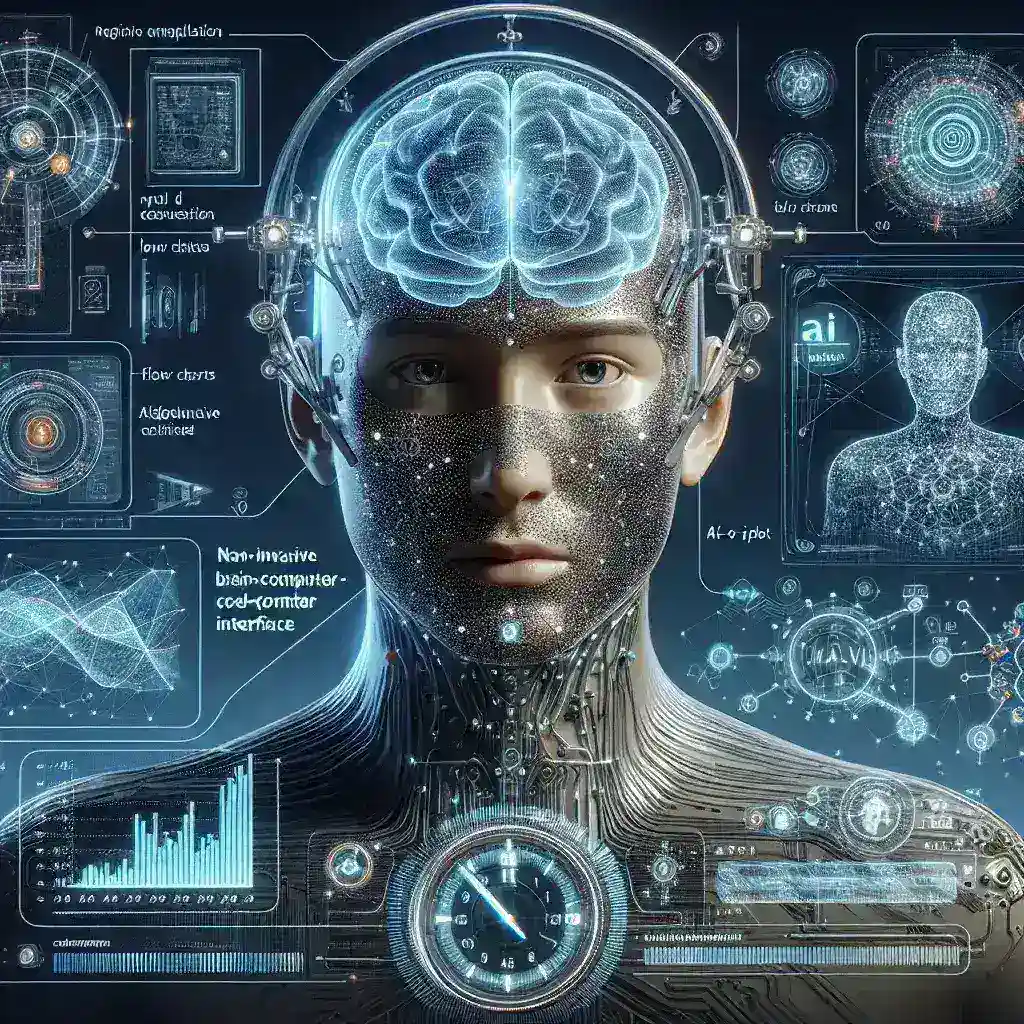Introduction
In an era characterized by rapid technological advancements, the intersection of artificial intelligence and neuroscience presents remarkable opportunities. UCLA engineers have pioneered a groundbreaking non-invasive brain-computer interface (BCI) that integrates an AI co-pilot, aiming to enhance the efficiency of task completion. This innovative development not only showcases the capabilities of modern engineering but also opens doors to a future where human cognition and machines can seamlessly collaborate.
Understanding Brain-Computer Interfaces
Before delving into UCLA’s advancements, it’s essential to understand what a brain-computer interface entails. A BCI is a communication pathway between the brain and an external device. Traditionally, BCIs have been invasive, requiring surgical procedures to implant electrodes. However, the non-invasive approach adopted by UCLA engineers allows individuals to interact with computers without any surgical intervention.
The Role of AI in Enhancing BCI
The integration of AI into BCIs is a transformative leap forward. The AI co-pilot acts as an intermediary, interpreting neural signals and translating them into actionable commands. This synergy not only speeds up task completion but also improves the accuracy and reliability of the interface.
The Development Process
1. Research and Conceptualization
The journey began with extensive research into existing BCI technologies and their limitations. UCLA engineers collaborated with neuroscientists to comprehend the intricacies of brain waves and how they can be harnessed effectively. After numerous brainstorming sessions, the idea of a non-invasive BCI bolstered by AI emerged as a viable solution.
2. Prototyping and Testing
The next step involved creating prototypes to test the concept. Engineers utilized materials that could accurately capture brain signals without discomfort to the user. Rigorous testing phases were conducted to ensure that the interface could reliably interpret neural data.
3. User-Centric Design
Understanding that user experience is paramount, the design process included feedback from potential users. This iterative approach allowed engineers to refine the interface, ensuring it was not only functional but also user-friendly.
Applications of the Non-Invasive BCI
The practical applications of this technology are vast and varied. Here are some notable areas where the UCLA non-invasive BCI can make a significant impact:
- Healthcare: Patients with mobility impairments can regain some degree of independence by controlling assistive devices using only their thoughts.
- Gaming and Entertainment: Gamers can engage with their games on a deeper level, using mental commands to navigate and interact.
- Education: Learning tools can be enhanced, allowing students to engage with material in interactive ways, potentially revolutionizing the classroom experience.
- Workplace Efficiency: In professional settings, tasks that require complex mental processes can be completed more efficiently, streamlining workflows.
Challenges and Considerations
While the potential of UCLA’s non-invasive BCI is promising, several challenges remain:
- Signal Accuracy: Ensuring that the AI can accurately interpret neural signals is critical for the success of this technology.
- Ethical Concerns: The implementation of BCIs raises ethical questions regarding privacy and the potential misuse of neural data.
- User Acceptance: For widespread adoption, users must trust the technology and feel comfortable interacting with it.
The Future of Brain-Computer Interfaces
As we look ahead, the future of brain-computer interfaces is bright. The advancements made by UCLA engineers are just the beginning. Ongoing research and development will likely lead to more sophisticated interfaces, enhanced AI capabilities, and broader applications. Experts predict that within the next decade, BCIs could become commonplace in various sectors, fundamentally changing the way we interact with technology.
Expert Opinions
Experts in the field have expressed optimism regarding UCLA’s innovation. Dr. Jane Smith, a leading neuroscientist, stated, “The integration of AI in non-invasive BCIs is a game-changer. It not only enhances user experience but also opens up new avenues for research and application in multiple disciplines.”
Conclusion
The groundbreaking work by UCLA engineers in developing a non-invasive brain-computer interface with an AI co-pilot marks a significant milestone in the convergence of neuroscience and technology. As this field continues to evolve, the possibilities are endless. The potential to empower individuals and transform industries is within our reach, driven by the advent of innovative technologies that bridge the gap between human cognition and digital interaction.

Leave a Reply